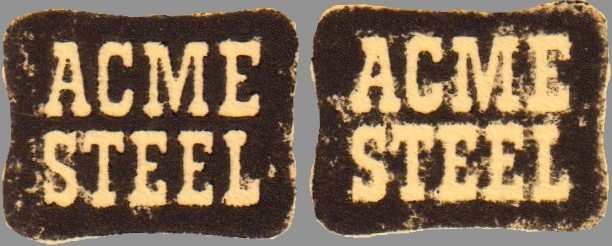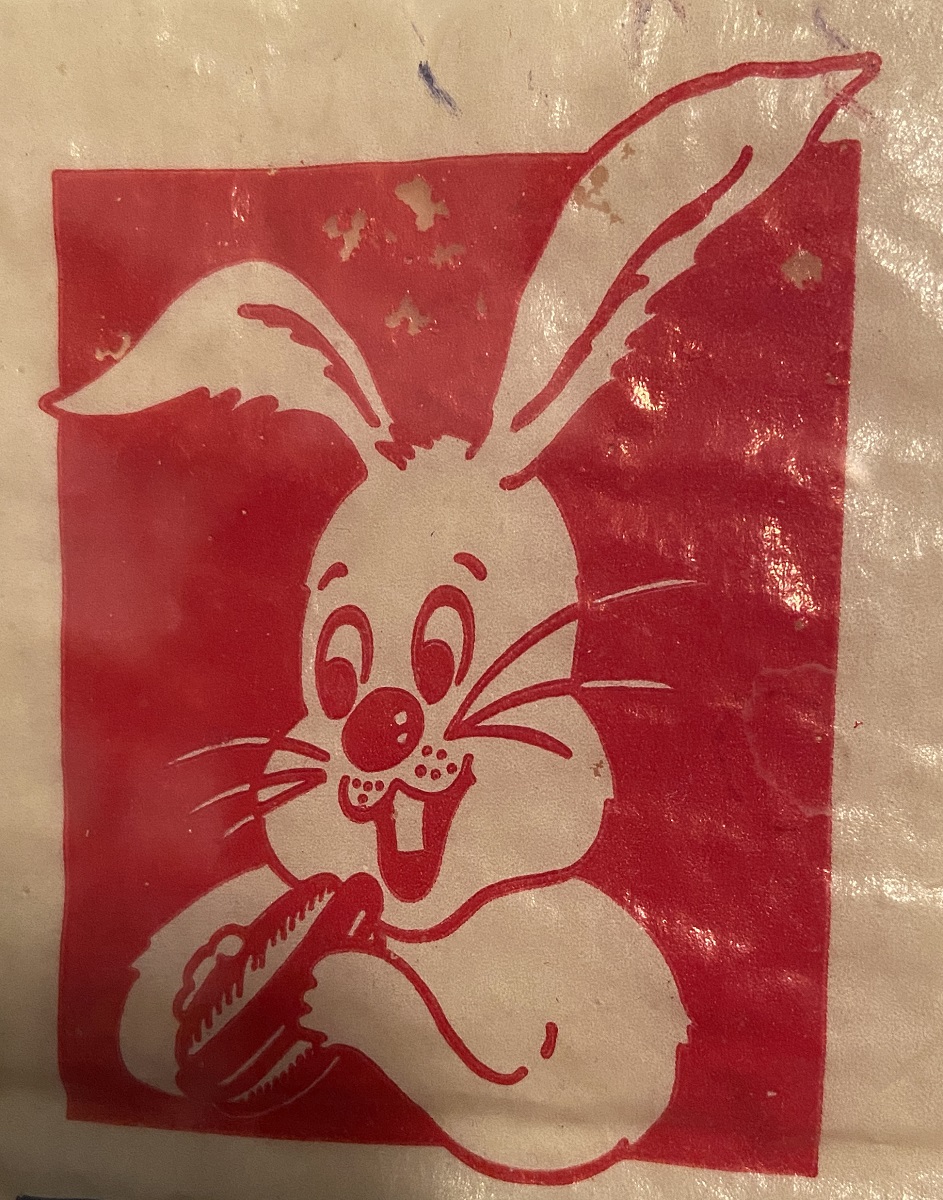There is nothing more thrilling in my world of coke plant archeology then to recover a document or item; then sometime later recover another one which is a companion to the first. Suddenly information is unlocked and the latter serves as a Rosetta Stone for the former. Below I outline one of those great moments.
Ammonia is a troublesome component of coke oven gas, and for 100 years or more, this has been removed by the by-product plant.
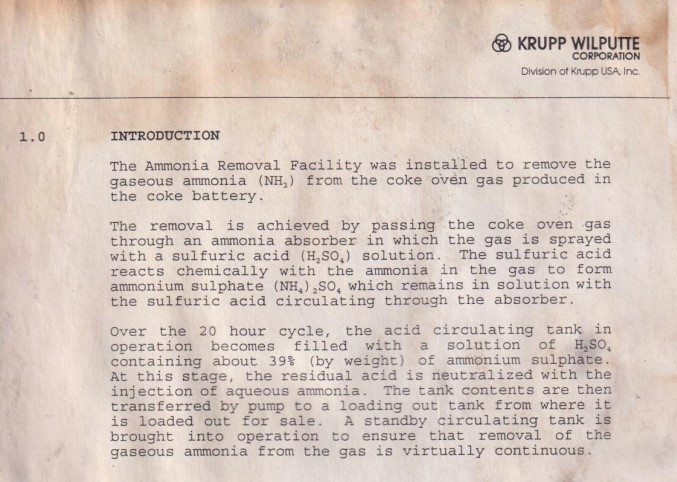
Sulfuric acid is used to pull the ammonia out of the COG; but what to do with the resulting ammonium sulfate?
Ammonium sulfate (American English and international scientific usage; ammonium sulphate in British English); (NH4)2SO4, is an inorganic salt with a number of commercial uses. The most common use is as a soil fertilizer.
https://en.wikipedia.org/wiki/Ammonium_sulfate
This is true – not only did every coke plant in the land offload tons of fertilizer every year, Interlake actually sold it under their own name!
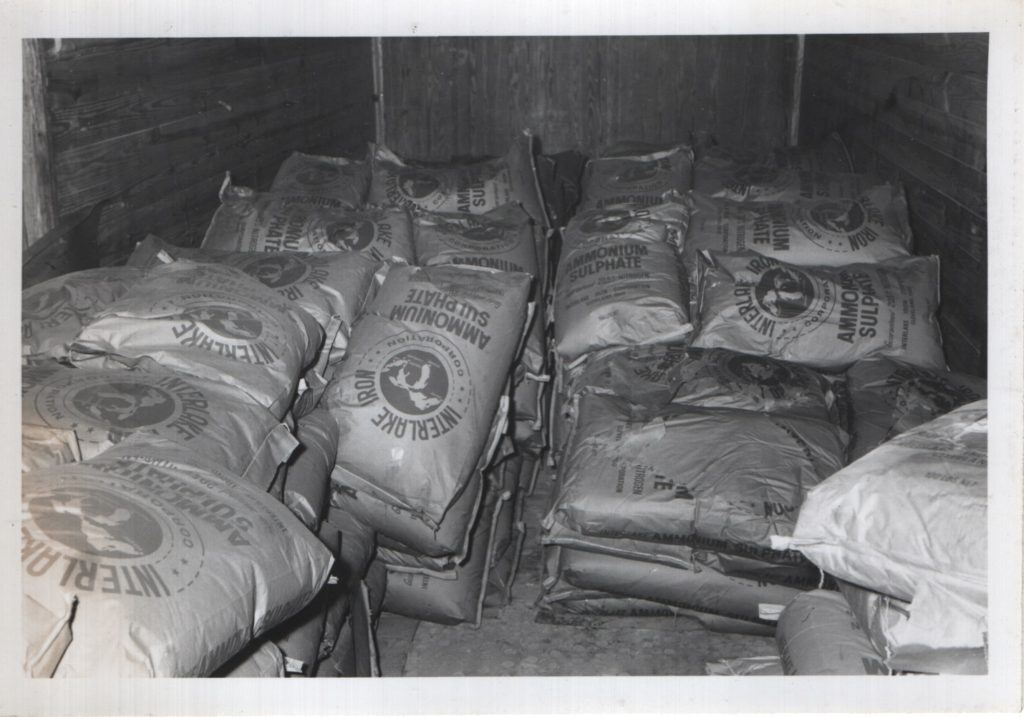
So there is your primer in NH3. Now let’s put that on hold for a moment. Perhaps a year ago, I found something odd on one of my visits to the plant. It was not ‘coke plant related’ – that’s for sure. But it was clearly very old. I will admit to being a bit of a pack rat when it comes to Acme history (this website is evidence of that) but somewhere I have to draw the line. So I left that item behind.
Now let’s fast forward to last Friday. That visit was a mission to recover documents – specifically, memos dating pre-1970, some as far back as the early 1950s. I had been stashing them for a while and I determined it was high time to clean out the area and scoop them all up.
So I did.
I came away with a good stack, and as always I went through them at home, tossed a few and read each and every one. I put them into sleeve protectors and into an Acme binder and they joined the others in my library. However in the midst of the hunt, I again came across this item which I had discarded a year ago. So this time I picked it up and brought it home.
I didn’t have a solid plan for it but I decided letting it rot away there wouldn’t be right. After a couple days, I decided to make an artwork of sorts for a friend. I disdain the word, but I thought it might make a ‘kitschy’ type of wall hanging. And certainly it would be one of a kind.
And all of this, every detail, is utterly devoid of reason to write about it on this website. But here we are!
So I went over to Goodwill and got a picture frame. Got a good deal too.
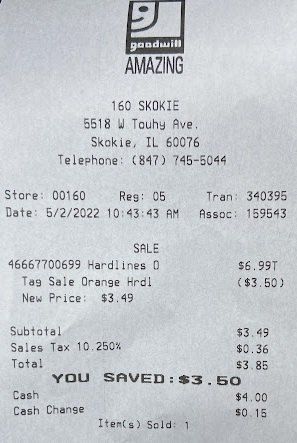
So I went about with a pair of scissors snipping and snipping away at this item until it fit. I wish I had a bit more material to work with but you can be damn sure it is one of a kind. So after a while (I actually took a nap half way through my work!) it was done!

It was a wax paper ‘tube’, folded flat on itself about 6″ wide. This tube was about 36″ long, and folded up into thirds. After some consideration, I decided to cut away the back layer (it had no text/pictures on it) and I also trimmed the width of the two outside ‘strips’. I was limited by the 36″ I had on hand – I wish I had a bit more but I made it work. I did also put the strips inside some books for an hour or so to help flatten them out.
So what in God’s name does BOLOGNA have to do with coke? I’ll answer that with another question – what does bologna have to do with ammonium sulfate?
I found a memo that was so strange when I first read it, I thought it was a joke or an analogy – the one referenced in the title of this post. But then I saw there was another memo (this one was NOT internal) stapled to it. This was all interesting but it got filed away with the others Saturday night.
But as I snipped and cut with my shears to make this kitschy artwork fit into its thrift store frame I noticed something very small at the top:
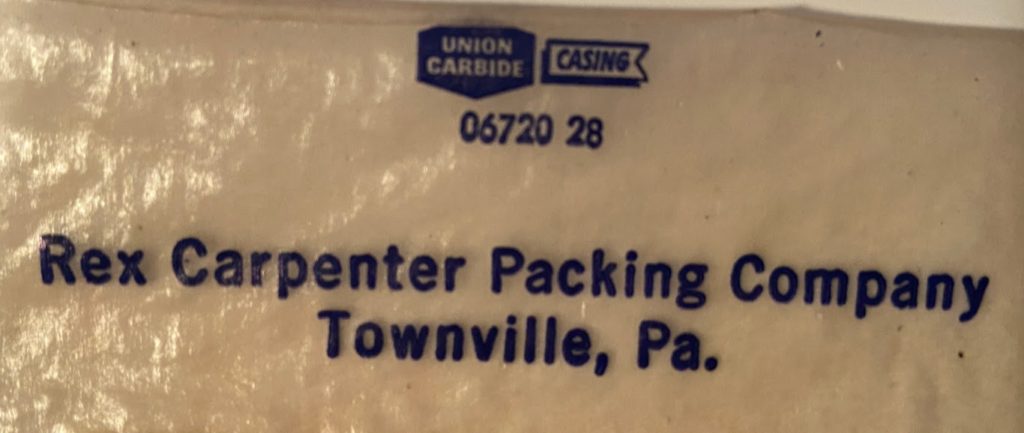
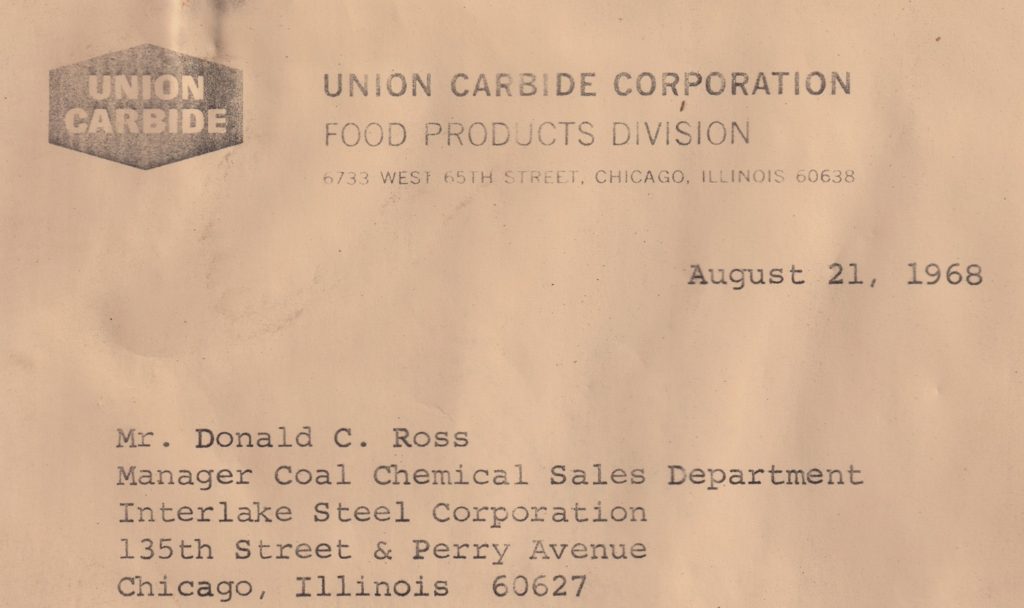
It is funny to me now, because I intended the photo of the BUNNY BRAND BOLOGNA ‘art’ to be the exciting punchline to this strange post. But my storytelling may be a bit off, or maybe this story is just so odd that it had to be this way. Have a look at the two memos below:
First of all – a Google search for “bunny brand bologna” returns ONE RESULT! And that is just an ad from a 1966 newspaper, cannot find any other information whatsoever on the brand (or how delicious it was).
Union Carbide’s letter is written oddly but it does seem the ‘samples’ they are referring to is indeed the Bunny Brand ‘wax paper’ sleeve I had found. But this isn’t wax paper – this is ‘Philippine Island Hemp’. I’ve done some reading on viscose (cellulose fabric) casings, I am still a bit confused but it sounds like this fabric reacts (“coagulates”) when treated with the ammonium sulfate (and shrinks to fit the meat inside?).
Interlake requested some info on what their ammonium sulfate was being used for, after some discussions about ‘trace element analysis’. Perhaps someone at Interlake put two and two together and wondered why their fertilizer was going to the stockyards instead of a farmer? And then got nervous about poisoning people with any other by-products that may have made it into the ammonia – the by-product plant is not an FDA facility!
Could Union Carbide just find another supplier and not use coke plant by-products? Is it Interlake’s responsibility to make their products food grade? Even if it wasn’t, they surely did not want to lose the business with a company that even today is enormous. It reminds me of one of my favorite books, it was written exactly about companies like this right there in Back of the Yards.
The sausage-room was an interesting place to visit, for two or three minutes, and provided that you did not look at the people; the machines were perhaps the most wonderful things in the entire plant. Presumably sausages were once chopped and stuffed by hand, and if so it would be interesting to know how many workers had been displaced by these inventions. On one side of the room were the hoppers, into which men shoveled loads of meat and wheelbarrows full of spices; in these great bowls were whirling knives that made two thousand revolutions a minute, and when the meat was ground fine and adulterated with potato flour, and well mixed with water, it was forced to the stuffing machines on the other side of the room. The latter were tended by women; there was a sort of spout, like the nozzle of a hose, and one of the women would take a long string of “casing” and put the end over the nozzle and then work the whole thing on, as one works on the finger of a tight glove. This string would be twenty or thirty feet long, but the woman would have it all on in a jiffy; and when she had several on, she would press a lever, and a stream of sausage meat would be shot out, taking the casing with it as it came. Thus one might stand and see appear, miraculously born from the machine, a wriggling snake of sausage of incredible length. In front was a big pan which caught these creatures, and two more women who seized them as fast as they appeared and twisted them into links. This was for the uninitiated the most perplexing work of all; for all that the woman had to give was a single turn of the wrist; and in some way she contrived to give it so that instead of an endless chain of sausages, one after another, there grew under her hands a bunch of strings, all dangling from a single center. It was quite like the feat of a prestidigitator—for the woman worked so fast that the eye could literally not follow her, and there was only a mist of motion, and tangle after tangle of sausages appearing. In the midst of the mist, however, the visitor would suddenly notice the tense set face, with the two wrinkles graven in the forehead, and the ghastly pallor of the cheeks; and then he would suddenly recollect that it was time he was going on. The woman did not go on; she stayed right there—hour after hour, day after day, year after year, twisting sausage links and racing with death. It was piecework, and she was apt to have a family to keep alive; and stern and ruthless economic laws had arranged it that she could only do this by working just as she did, with all her soul upon her work, and with never an instant for a glance at the well-dressed ladies and gentlemen who came to stare at her, as at some wild beast in a menagerie.
“The Jungle” – Upton Sinclair (1906)

